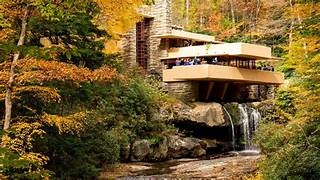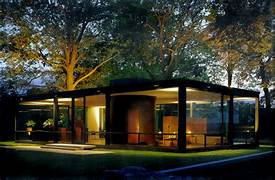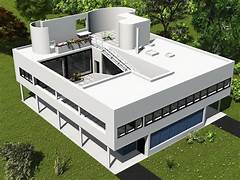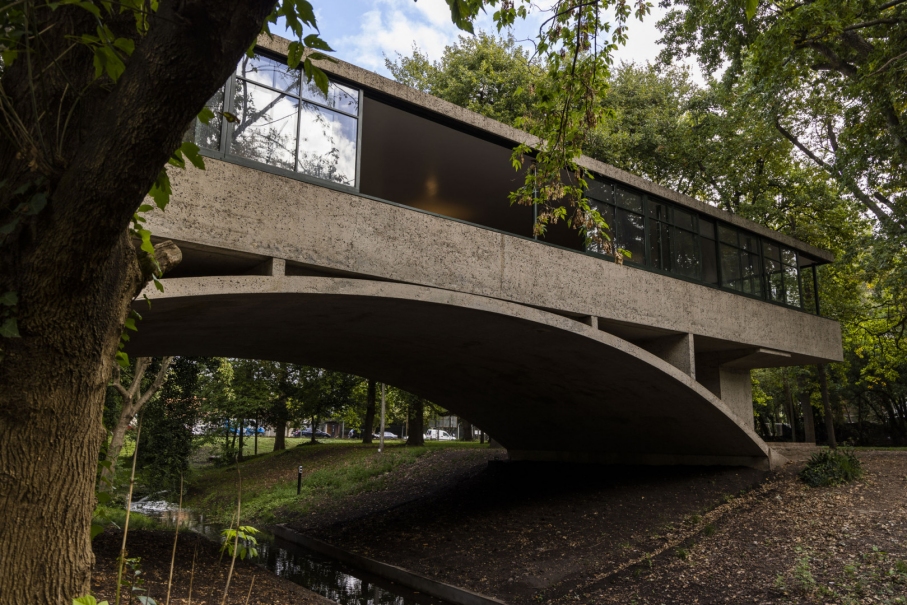International Heritage Proposal Document – UNESCO Submission Draft
Included Works
- Villa Savoye – Le Corbusier & Pierre Jeanneret (France)
- Fallingwater – Frank Lloyd Wright (USA)
- Glass House – Philip Johnson (USA)
- Casa del Puente – Amancio Williams (Argentina)




🔹 Executive Summary
The proposal establishes a global architectural constellation representing the genesis, evolution, and humanistic culmination of Modern Architecture. Each house embodies a milestone in the transformation of architectural thought — from the rationalist foundations of Europe to the organic and humanist reinterpretations of the Americas.
Together, they express the universal aspiration of the 20th century:
to reconcile humanity, technology, and nature through design.
🔹 Universal Value (UNESCO Criteria)
Criterion (i): Masterpieces of human creative genius.
Criterion (ii): Exhibit an important interchange of human values across continents.
Criterion (iv): Outstanding examples of architectural types illustrating significant stages in human history.
Criterion (vi): Associated with ideas of progress, freedom, and rational harmony between human life and the environment.
🔹 Comparative Analysis
| Axis | Europe | North America | South America |
|---|---|---|---|
| Architect | Le Corbusier | Wright / Johnson | Williams |
| Concept | Rational Purism | Organic / Transparent | Structural Humanism |
| Material | Reinforced Concrete | Concrete / Glass | Concrete + Landscape Integration |
| Philosophy | Function as aesthetics | Nature as structure | Space as consciousness |
| Symbolism | Machine à Habiter | House as Nature | House as Mind |
🔹 Integrity & Authenticity
All four sites maintain a high degree of authenticity in form, materials, and spirit.
Each has been restored with original technical criteria and functions as a living museum of modern design.
🔹 Global Synthesis: “Four Houses – One Human Ideal”
- Le Corbusier (Europe): The origin — geometry and logic.
- Wright (North America): Harmony with nature — organic architecture.
- Johnson (North America): Transparency — modernism as reflection.
- Williams (South America): The bridge — modernity as transcendence.
🔹 Institutional Proposal
Submitting Entity:
SpaceArch Solutions International / EcoBuddha Maitreya Foundation for Architectural and Environmental Heritage
Partner Institutions:
UNESCO Argentina Commission, National Trust (USA), Fondation Le Corbusier (France).
Objective:
To obtain the UNESCO Declaration of World Cultural Heritage – “Modern Quartet: The Universal Houses of the 20th Century” and establish an international preservation and study program uniting these sites under one cultural route.
🏛️ TECHNICAL DOSSIER – PROJECT “MODERN FOUR HOUSES OF THE 20TH CENTURY”
Objective: Joint nomination to UNESCO for the Declaration of International Historical Heritage.
🇦🇷 1. The Bridge House – Architect Amancio Williams, Mar del Plata (Argentina)
- Construction period: 1943–1946
- Location: 3350 Funes Avenue, Mar del Plata, Buenos Aires, Argentina
- Original owner: Dr. Alberto Williams (musician and composer)
- Typology: Single-family dwelling suspended over a stream — reinforced-concrete bridge structure
Distinctive Features:
- Innovative parabolic arch supporting the main volume suspended above the Las Chacras stream.
- First Latin American residence with a fully integrated natural ventilation system and complete open plan.
- Recognized worldwide as a masterpiece of the Modern Movement and a landmark of Argentine rationalism.
Heritage Value:
A synthesis of landscape, engineering, and the humanistic ideals of modern architecture.
Current Status:
Fully restored and open to the public as a museum and cultural center.
🇺🇸 2. Fallingwater – Architect Frank Lloyd Wright, Mill Run, Pennsylvania (USA)
- Construction period: 1936–1939
- Location: Bear Run, Pennsylvania, United States
- Original owner: Edgar J. Kaufmann
- Typology: Single-family dwelling integrated into a natural environment
Distinctive Features:
- Global icon of organic architecture.
- Cantilevered concrete terraces built directly over a natural waterfall — harmony between structure and landscape.
- Inscribed on the UNESCO World Heritage List in 2019.
Heritage Value:
Embodies the perfect union of nature, art, and human habitation.
Current Status:
Managed by the Fallingwater Foundation as a museum and educational center.
🇺🇸 3. The Glass House – Architect Philip Johnson (influenced by Mies van der Rohe), New Canaan, Connecticut (USA)
- Construction period: 1948–1949
- Location: 199 Elm Street, New Canaan, Connecticut, United States
- Original owner: Philip Johnson
- Typology: Experimental steel-and-glass residence
Distinctive Features:
- Radical transparency and visual integration with the surrounding landscape.
- Paradigmatic example of Bauhaus principles adapted to post-war America.
- Emblem of structural minimalism and conceptual purity.
Heritage Value:
A formal and philosophical manifesto defining the modern aesthetic of the 20th century.
Current Status:
Administered by the National Trust for Historic Preservation as The Glass House Museum.
🇫🇷 4. Villa Savoye – Architects Le Corbusier & Pierre Jeanneret, Poissy (France)
- Construction period: 1928–1931
- Location: 82 Rue de Villiers, Poissy, Île-de-France, France
- Original owners: Pierre and Eugénie Savoye
- Typology: Single-family residence elevated on pilotis
Distinctive Features:
A built manifesto of Le Corbusier’s “Five Points of a New Architecture”:
- Pilotis – columns lifting the building off the ground.
- Free plan – absence of structural interior walls.
- Free façade – independent of the structural frame.
- Ribbon windows – continuous horizontal openings.
- Roof garden – restoration of the natural footprint.
- Masterful use of reinforced concrete, golden-section proportions, and natural light.
Heritage Value:
- Pinnacle of the Modern Movement; model of rational housing that inspired generations of architects.
- Marks the moment when European architecture defined the universal principles of modernity.
Current Status:
National museum administered by the Centre des Monuments Nationaux.
UNESCO Declaration:
Part of the 2016 inscription “The Architectural Work of Le Corbusier – an Outstanding Contribution to the Modern Movement.”
🌐 5. Rationale for Joint Nomination
These four works together form a continental quartet of modern thought:
- Le Corbusier: Rational purity and the birth of modernism.
- Wright: Organic harmony with nature.
- Johnson/Mies: Transparency and structural minimalism.
- Williams: Structural synthesis and Latin-American humanism.
United, they express the evolution of the modern spirit across three continents, bound by universal principles of:
technical innovation, respect for the environment, and the liberation of the human being through space.
🕊️ Philosophical Reflection – The Human Meaning of the Modern Triad
The Modern Quartet represents far more than an architectural alliance — it is a testament to the 20th century’s spiritual evolution.
Each of these houses was born from a different continent, yet all share the same universal question:
How can the human being inhabit the Earth with intelligence, beauty, and respect?
Le Corbusier sought reason through geometry;
Wright sought harmony through nature;
Johnson sought transparency through structure;
Williams sought the bridge — the union between spirit, matter, and landscape.
Together, they form a global syntax of modern consciousness, a constellation of built ideas that express the dignity of thought and the poetry of space.
They do not compete — they complete each other.
At a time when humanity faces disconnection and environmental imbalance, these houses remind us that architecture is not only shelter but also conscience.
They stand as four living symbols of equilibrium — between invention and humility, progress and preservation, logic and emotion.
This nomination therefore seeks not only to protect four masterpieces,
but to reaffirm a universal message:
To build is to remember that the Earth is our first home — and our shared responsibility.
Proyect: Arch. RGG
